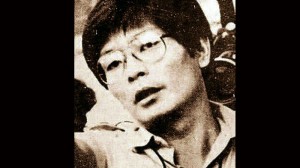Putting the National Artist awards in perspective
OUR occasional articles on the National Artist awards have apparently stirred a hornet’s nest of contrary views, especially from proponents of “iconic” actors and presumptive nominees for the country’s top artistic honor, who resent our thesis that “creation is superior to interpretation.”
Some of them harangue us with follow-up questions meant to badger us into a rhetorical corner, while others accuse us of all sorts of nefarious motives for “demeaning” the achievements of some much-loved stars—which is by no means our intention.
The good thing in this welter of debates and diatribes is that more people are getting themselves “invested” in the many complicated issues surrounding the award.
Our hope is that the dust will eventually settle and more objective minds will prevail, so that the prized honor will be able to regain some of its lost glory—and credibility.
That’s why we think it’s imperative that the currently ongoing search for the next batch of awardees be deferred until the Supreme Court finally rules on the case that has been put before it for many months now. Otherwise, the resulting logjam of unresolved opinions will make the already contentious situation that much more difficult to figure out!
Article continues after this advertisementQueries
Article continues after this advertisementOne of the badgering queries we have been “dared” to answer goes this way: “Who do you think deserves to be made the next National Artist for Film?”
Honestly, we would prefer to keep the discussion on the level of ideas rather than specific personalities—but, upon reflection, we’ve decided to bite the potentially poisonous bait, in the perhaps foolhardy hope that we can help imbue the acrimonious debate with greater pertinence and clarifying focus.
—And so, to resolutely rush in where more cautious angels fear to tread:
To date, the field of film and broadcast arts has elevated only a few writer-directors to the rank of National Artist. Next in line, in our hopefully objective estimation, could be Gregorio Fernandez, Ramon Estella, Manuel Silos and Mike de Leon.
We say “could,” because the sifting and vetting process has yet to be undertaken for each of them, and this is where the less “provable” nominees are winnowed off.
There’s also the matter of the availability of “prima facie” proof, especially in the case of filmmakers from the ’30s and ’40s, whose masterworks are no longer extant.
Reviews
In such instances, we have to go by the witness of reviews, or really old film buffs who can still recall those exceptional movies in sufficiently corroborative detail.
For instance, Estella made fine but relatively obscure movies, some of them documentaries not just about the Philippines but also with a Southeast Asian scope and pertinence—but, how many people can recall them and vouch for their value, many decades after the fact?
And yet, all of the names we’ve mentioned need to be researched, considered and vetted—with a chronological preference—so, it stands to reason that Mike de Leon, despite the relative availability of his movies, will have to wait a round or two before he’s deservedly honored.
In addition to the filmmakers we’ve cited, other gifted practitioners of the craft and art of cinema could logically be propounded, including some of the “iconic” actors whose cause has been recently pushed by their avid advocates.
In the actors’ case, however, the additional issues of “body of work” and “consistency of level of achievement” have to be addressed.
Finally, in all this hue and cry, the “creation is superior to interpretation” factor has to be contextualized. And, the Supreme Court first has to legally settle the odoriferous controversy surrounding the last round of awardees. All else would be the discombobulating opposite of anticlimax!
